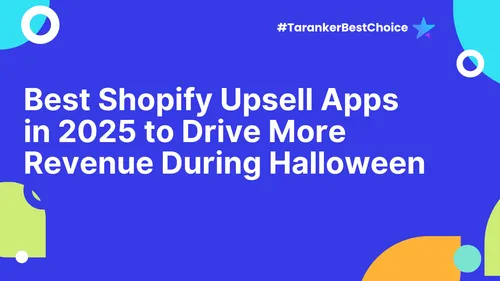Voice-activated shopping is no longer science fiction — it’s a reality that is rapidly reshaping ecommerce. With the boom of smart speakers and AI-powered virtual assistants, customers are increasingly using their voices to search for products, compare options, and complete purchases online. According to Juniper Research, voice commerce is forecasted to reach $19.4 billion by 2023, a staggering leap from $4.6 billion in 2021.
For ecommerce businesses, this isn't just another trend to watch—it’s a call to action. Understanding how AI powers voice commerce and how consumer behaviors are shifting will be crucial for brands that want to lead rather than lag behind.

What is Voice Commerce and Why Is It Growing?
Voice commerce refers to the act of making purchases through spoken commands on devices like smart speakers (e.g., Amazon Alexa, Google Nest), smartphones, and even cars. Instead of clicking or typing, users simply talk—and the transaction begins.
Why is this growing so quickly? Because voice shopping aligns perfectly with today’s consumers' expectations: instant gratification, minimal effort, and personalized experiences. Improvements in AI, broader adoption of smart devices, and the consumer desire for convenience are converging to make voice commerce a major force in ecommerce's future.
If your brand isn’t preparing for how people speak when they shop, you could be invisible to a growing segment of the market.
How AI Powers the Voice Commerce Experience
AI is the brain behind the voice commerce boom. It's not just about recognizing voice commands; it's about understanding human intent, predicting needs, and personalizing experiences seamlessly.
AI technologies such as Natural Language Processing (NLP) enable voice assistants to understand complex, conversational queries rather than just basic keywords. Whether it’s “Order me eco-friendly laundry detergent” or “Find the best deal on running shoes,” AI interprets the request’s nuance, context, and urgency.
Moreover, AI-powered systems learn from previous interactions—like what products a customer ordered last time—and proactively suggest reorder options or complementary products. Without AI, voice commerce would be clunky and error-prone. With it, the experience becomes intuitive, frictionless, and customer-centered.

How Voice Search is Changing Customer Behavior
Voice search is not just altering how customers search; it’s transforming how they think about shopping.
Unlike traditional typed searches, voice queries are longer, more conversational, and more intent-driven. When a user says “Find me a waterproof hiking jacket under $150,” they are not just browsing—they’re ready to buy. This high purchase intent means that voice search customers move through the funnel faster and expect seamless outcomes.
Moreover, because voice shopping reduces the number of visible options (users typically hear one or two choices rather than viewing a page of results), brand trust and familiarity become even more critical. Customers will often default to brands they already know and trust, giving recognizable, reliable ecommerce brands a major advantage in the voice commerce landscape.
Opportunities and Challenges for Ecommerce Brands
Voice commerce offers ecommerce brands incredible potential—but only for those prepared to navigate its unique opportunities and challenges.
4.1. Opportunities
Voice commerce offers new ways to reach customers early and directly in the buying journey. Brands can:
-
Optimize for voice SEO to ensure they are recommended first.
-
Enable voice reordering to drive higher retention and lifetime value.
-
Create unique customer experiences through voice-specific promotions or exclusive offers.
Early adopters can position themselves as innovators, winning loyalty in a market still underserved in the voice channel.
4.2. Challenges
However, there are real obstacles:
-
No visual cues mean product descriptions must be vivid and compelling enough to sell without images.
-
Trust issues arise if customers cannot see what they are buying, making reputation and reviews even more important.
-
Technical complexity in integrating Alexa skills or Google Assistant actions into ecommerce systems requires upfront investment and expertise.
Navigating these challenges requires strategic planning—not just jumping on the trend.

How Ecommerce Stores Can Prepare for Voice Commerce
Adapting to voice commerce requires thoughtful changes across your store’s content, technology, and customer journey. Here’s how to start:
-
Optimize Content for Voice SEO: Use natural, conversational language. Focus on long-tail keywords and structure your site with FAQs that match how people speak when asking questions.
-
Integrate Voice-Friendly Tools: Build skills for Alexa or Google Assistant so customers can search, order, and reorder products easily.
-
Simplify Checkout Flows: Minimize steps in the buying process. Implement voice-enabled payment systems to allow for instant purchases.
-
Invest in Brand Building: Because familiarity drives voice purchases, focus on building brand trust through marketing, reviews, and customer experiences.
If you make your store easier to shop with a voice command, you’ll position yourself ahead of competitors still stuck in traditional ecommerce mindsets.
Real-World Examples of Brands Winning with Voice Commerce
Leading brands are already showing how voice commerce can transform engagement and sales.
-
Walmart has partnered with Google to enable customers to order groceries via voice. A simple “Hey Google, add milk to my Walmart cart” brings the brand closer to everyday shopping habits.
-
Sephora uses voice commands for product discovery and makeup tutorials, enhancing the customer journey with a blend of education and shopping.
-
Domino’s Pizza offers full ordering capabilities via voice assistants, cutting friction to near zero and boosting order frequency.
These examples show that voice isn’t just a cool add-on—it’s becoming a core channel for ecommerce brands serious about future-proofing their business.
Conclusion
Voice commerce is no longer an emerging trend—it’s a new reality that’s reshaping ecommerce at lightning speed. Fueled by AI advancements and changing consumer behaviors, voice shopping offers businesses new ways to connect, engage, and sell.
Brands that invest now in voice optimization, customer trust, and AI integration will be the ones leading the market in 2025 and beyond. Voice commerce isn't about abandoning traditional methods—it's about layering new, intuitive experiences on top of them.
In a voice-first future, the winners won’t just be seen—they’ll be heard













